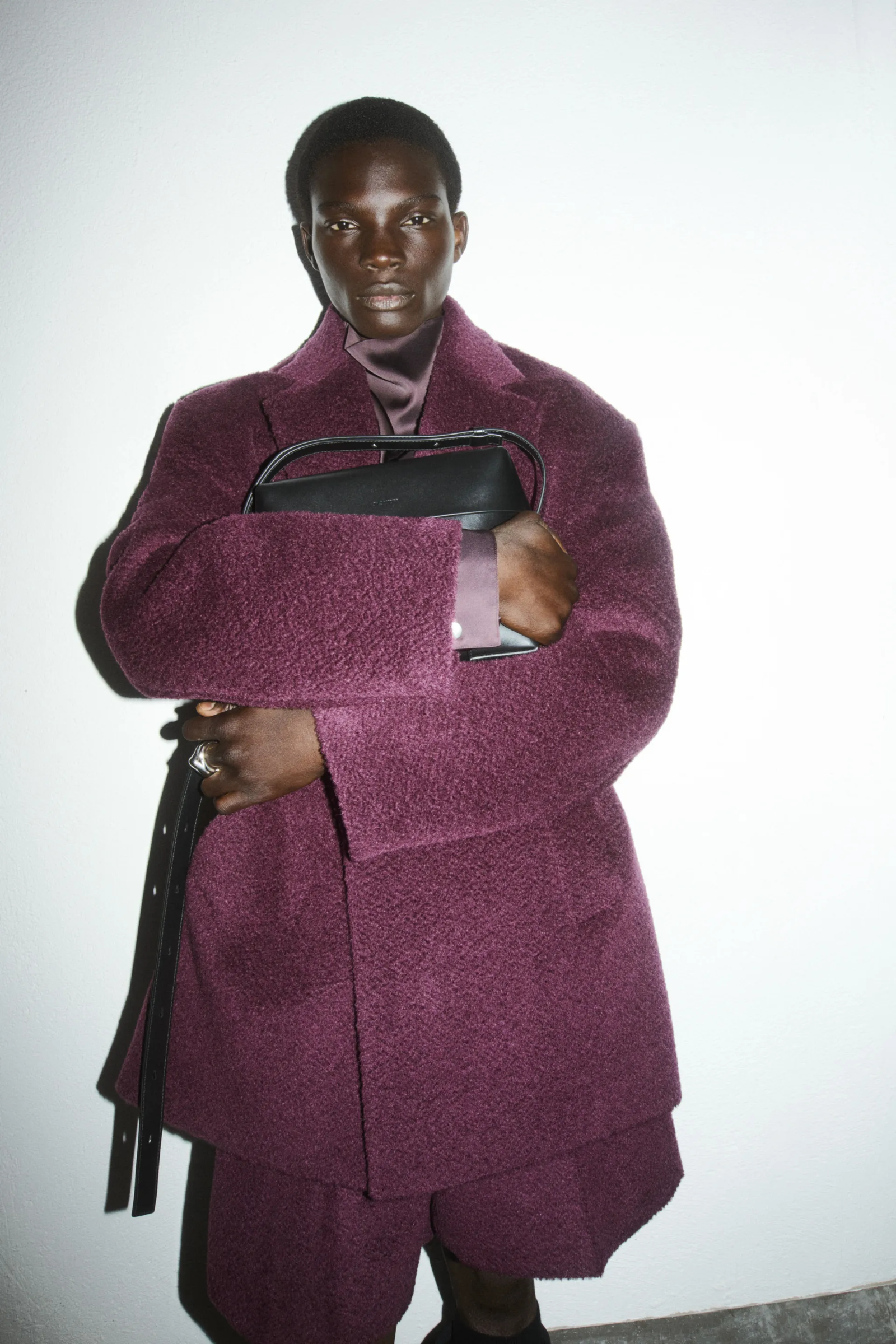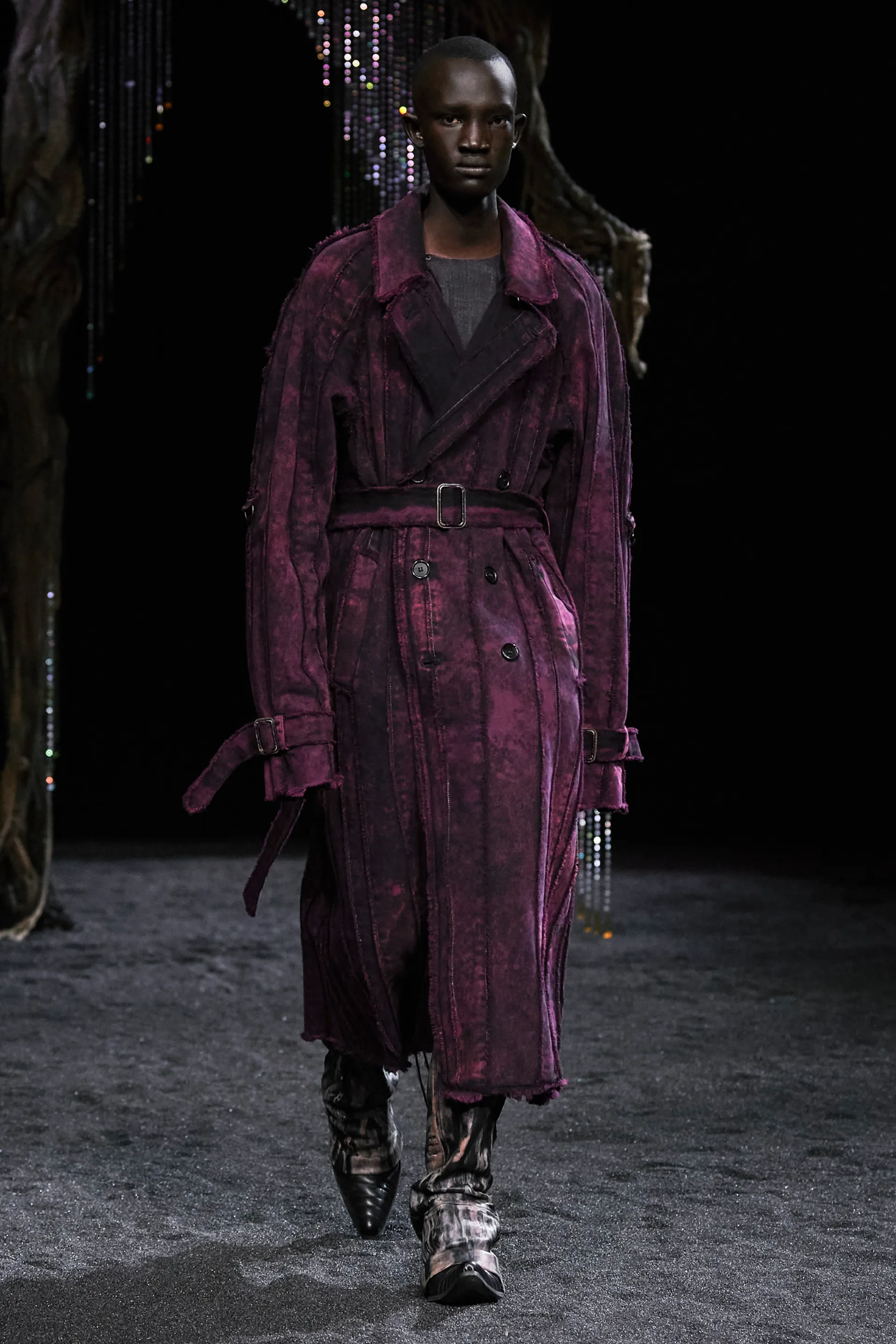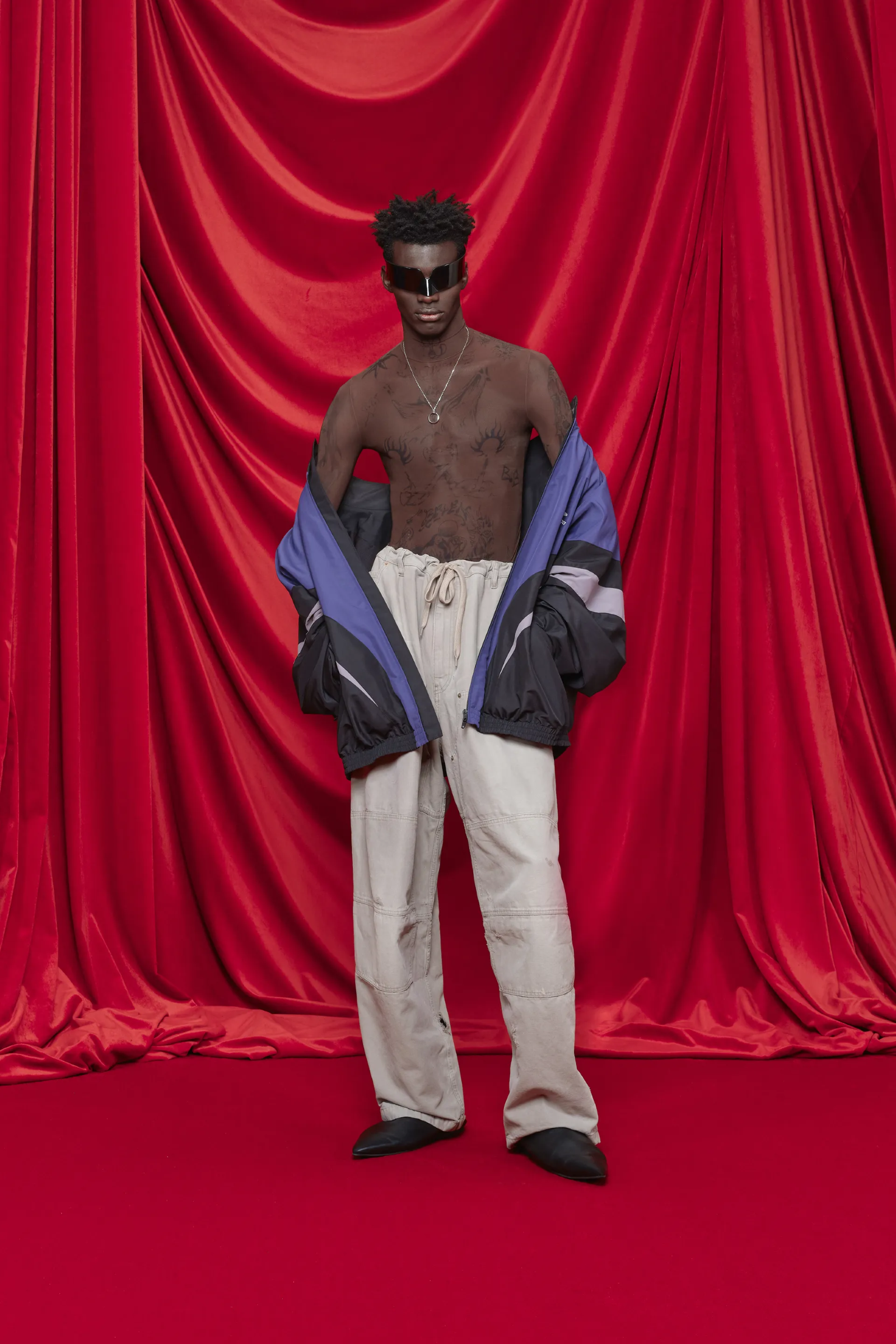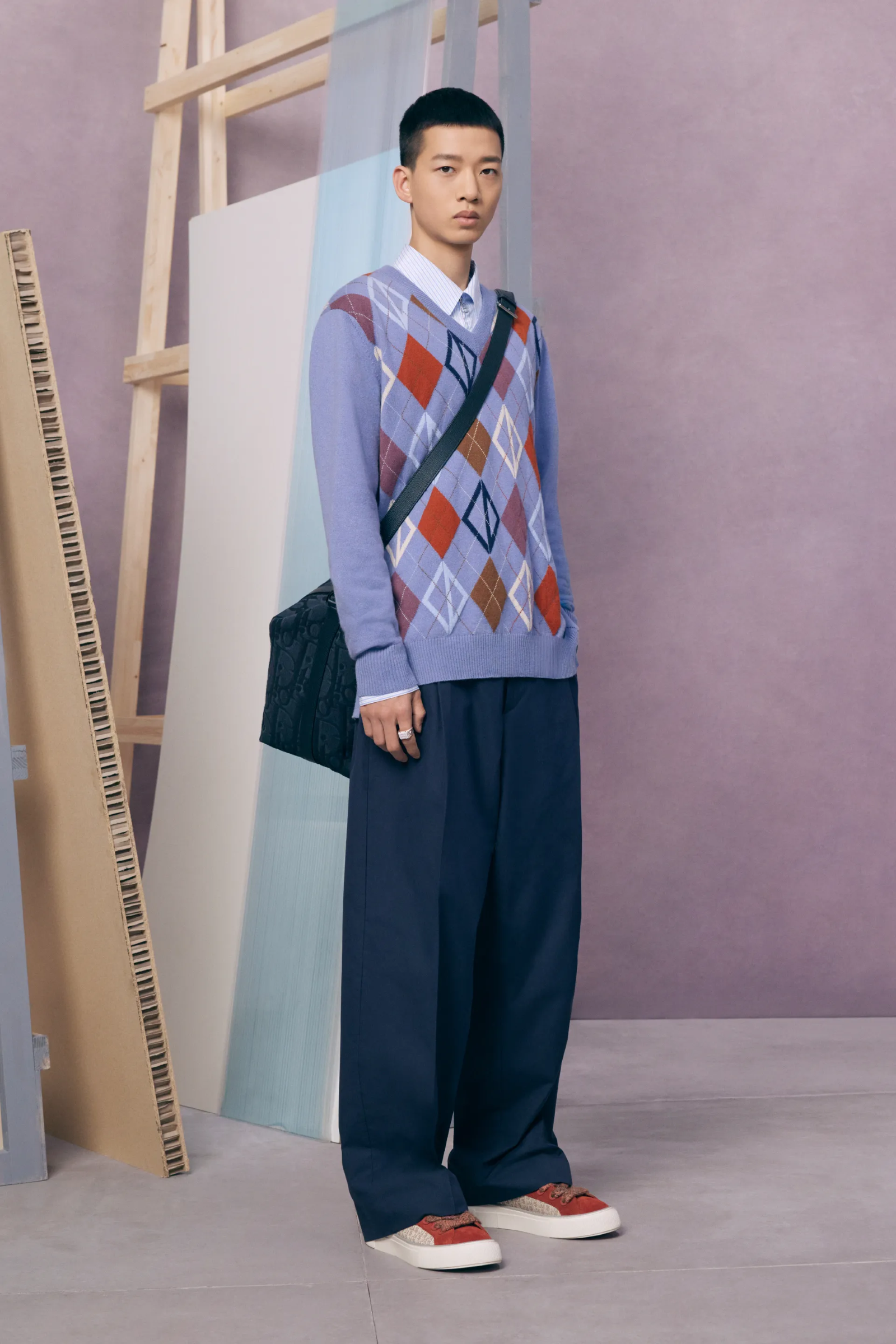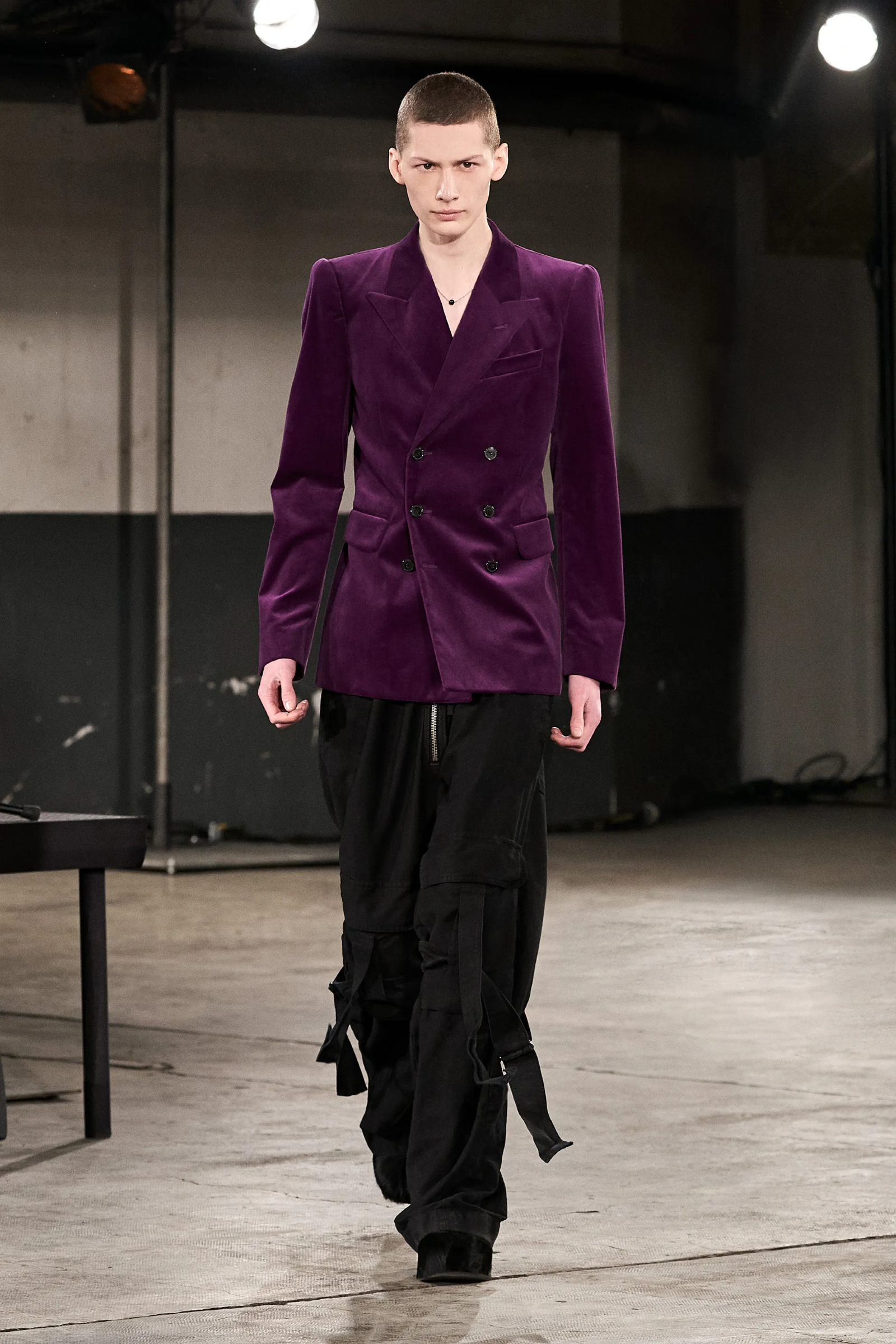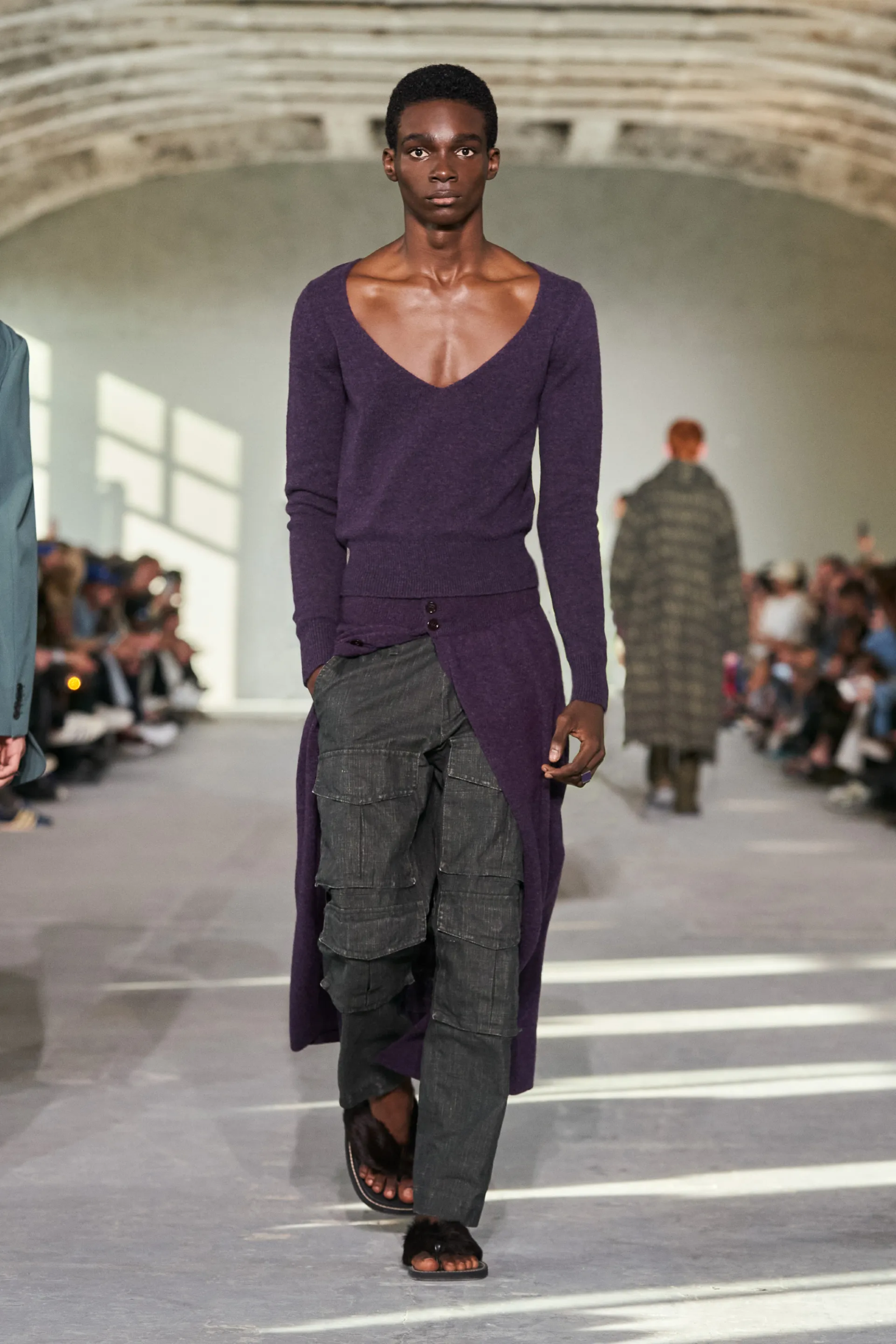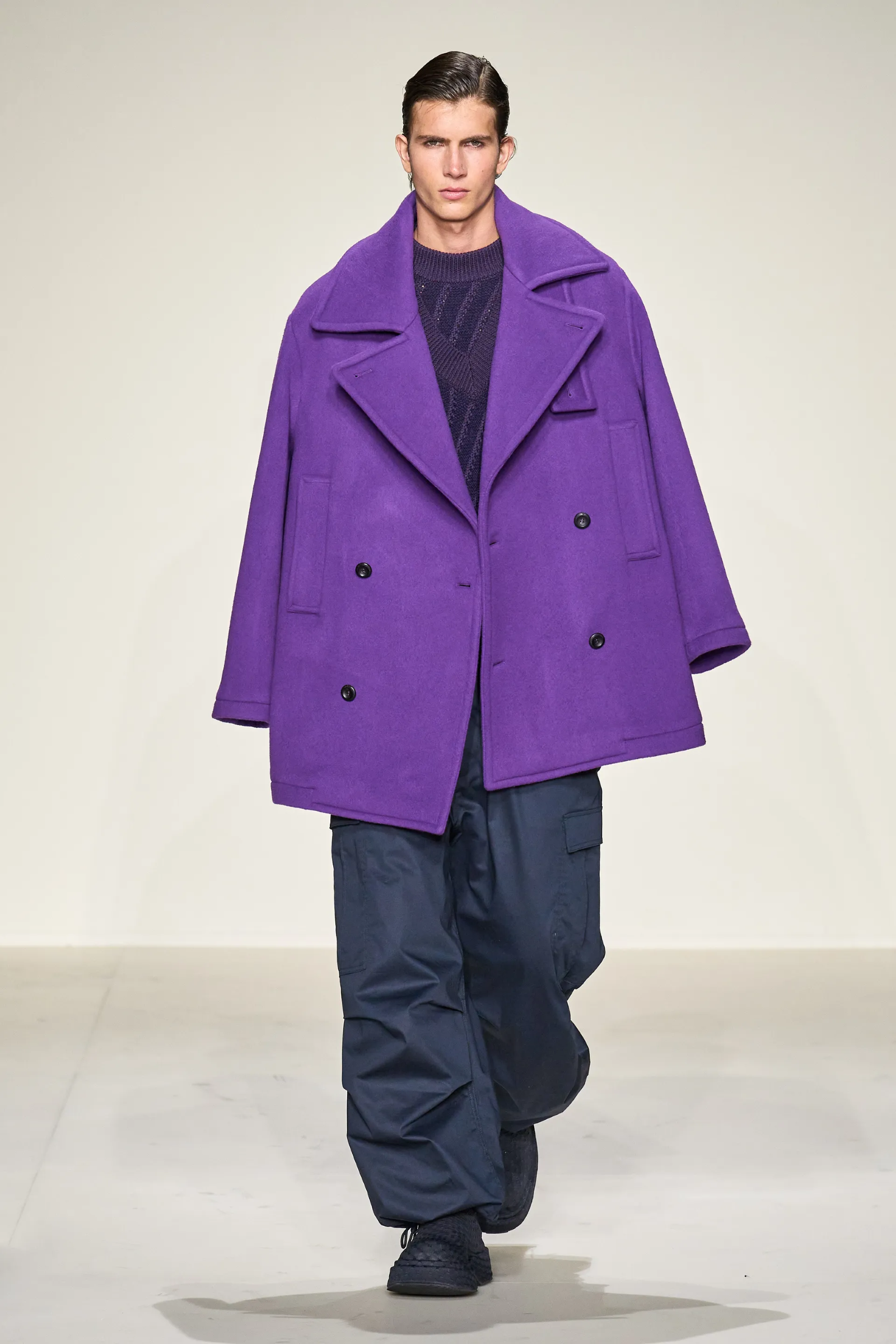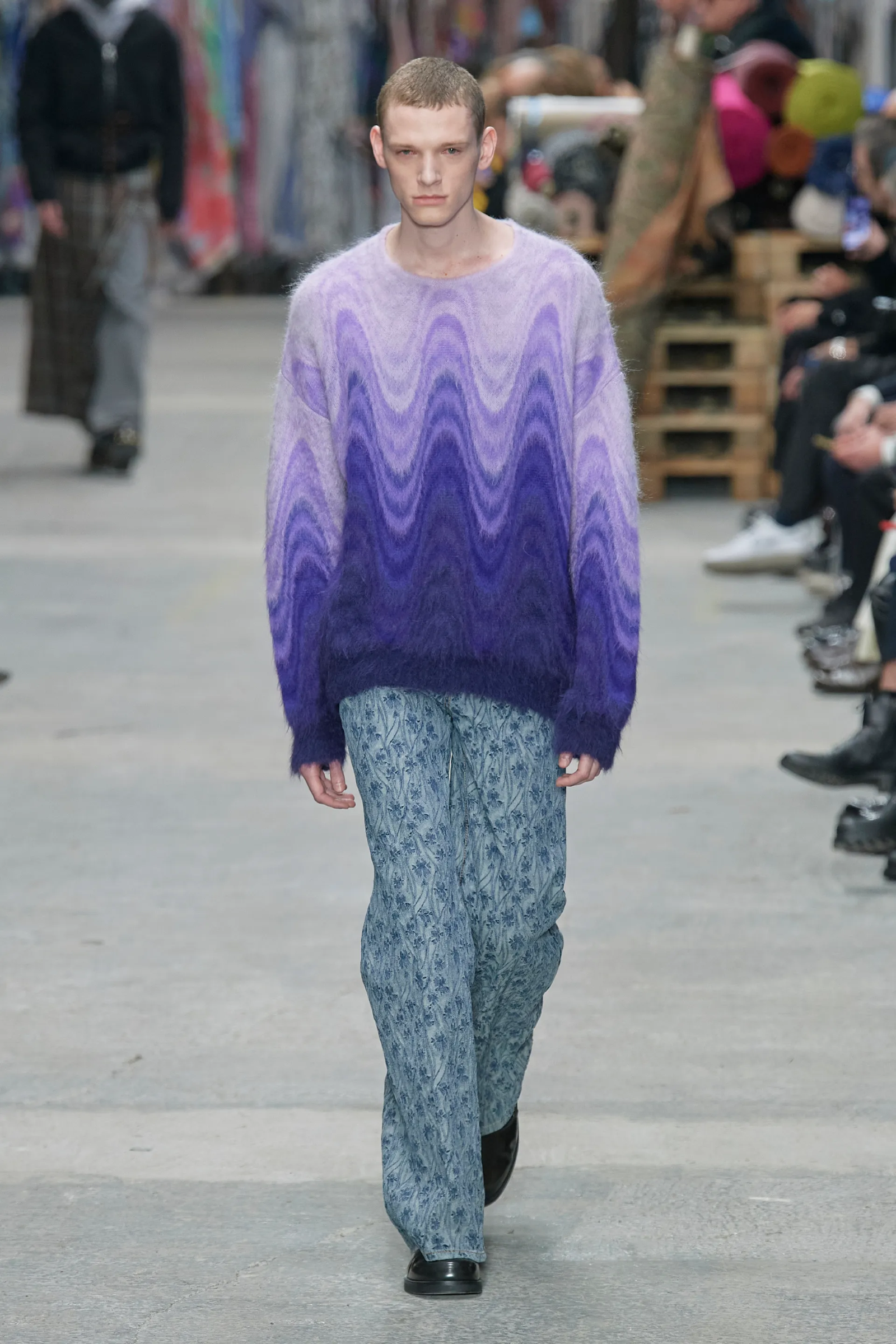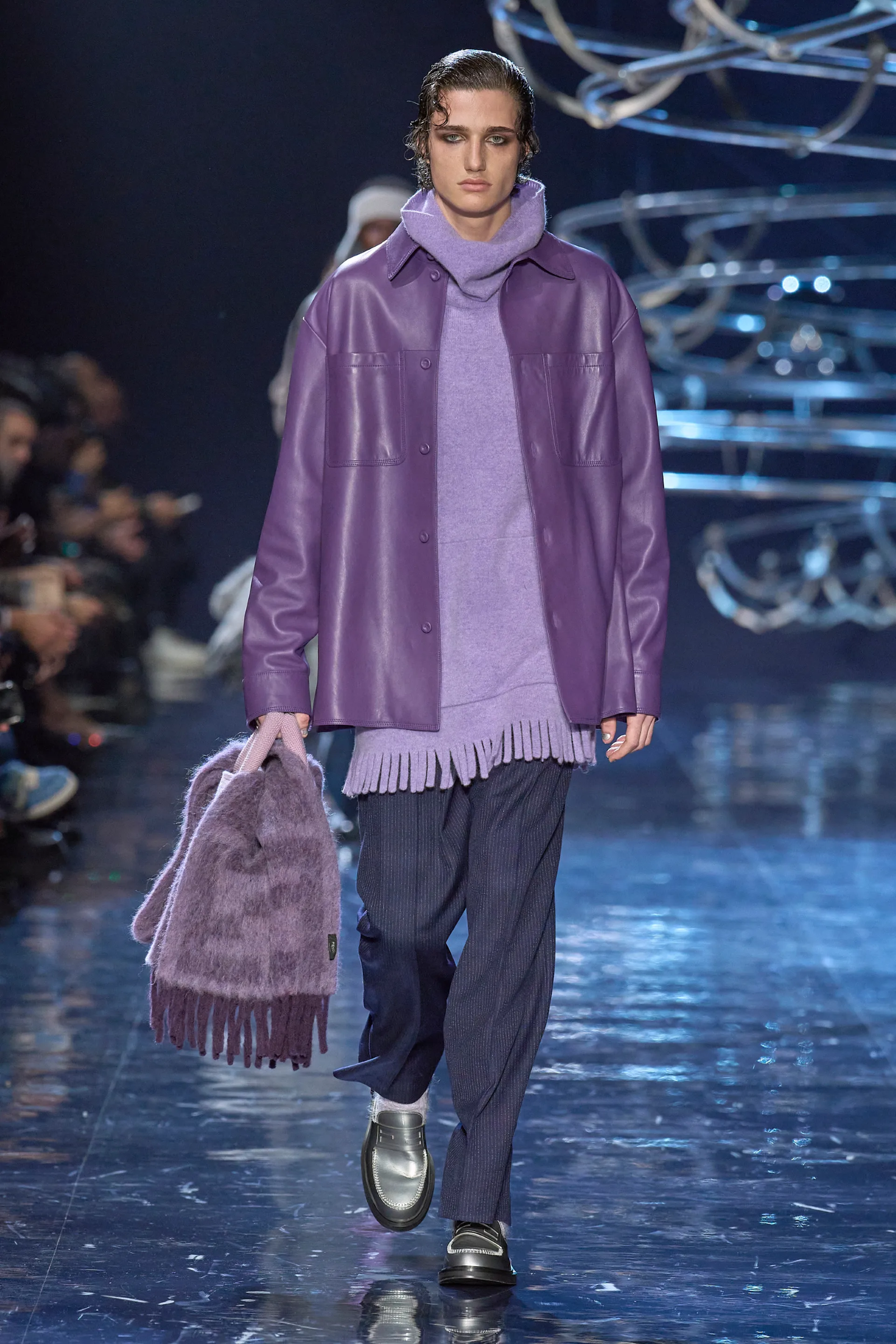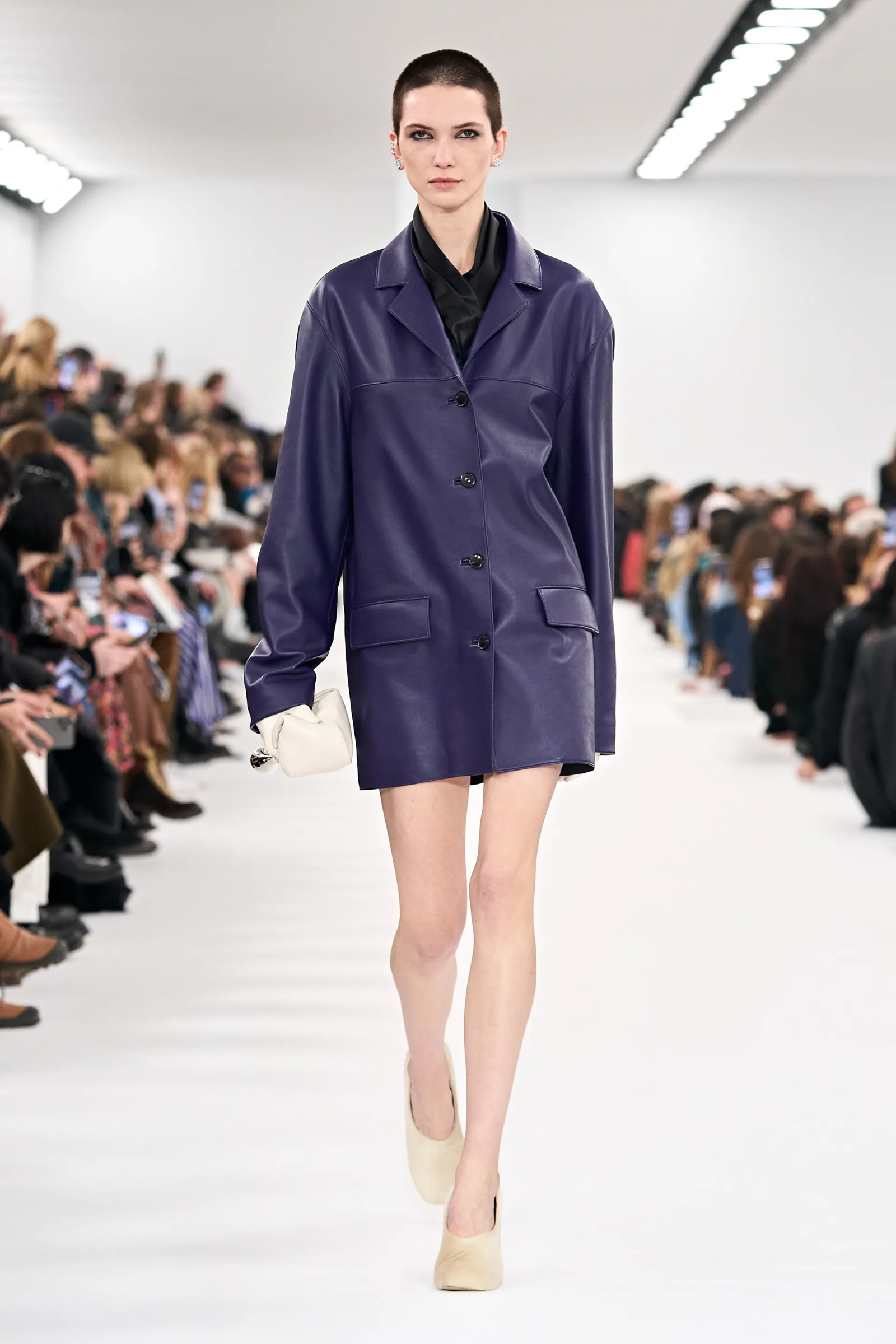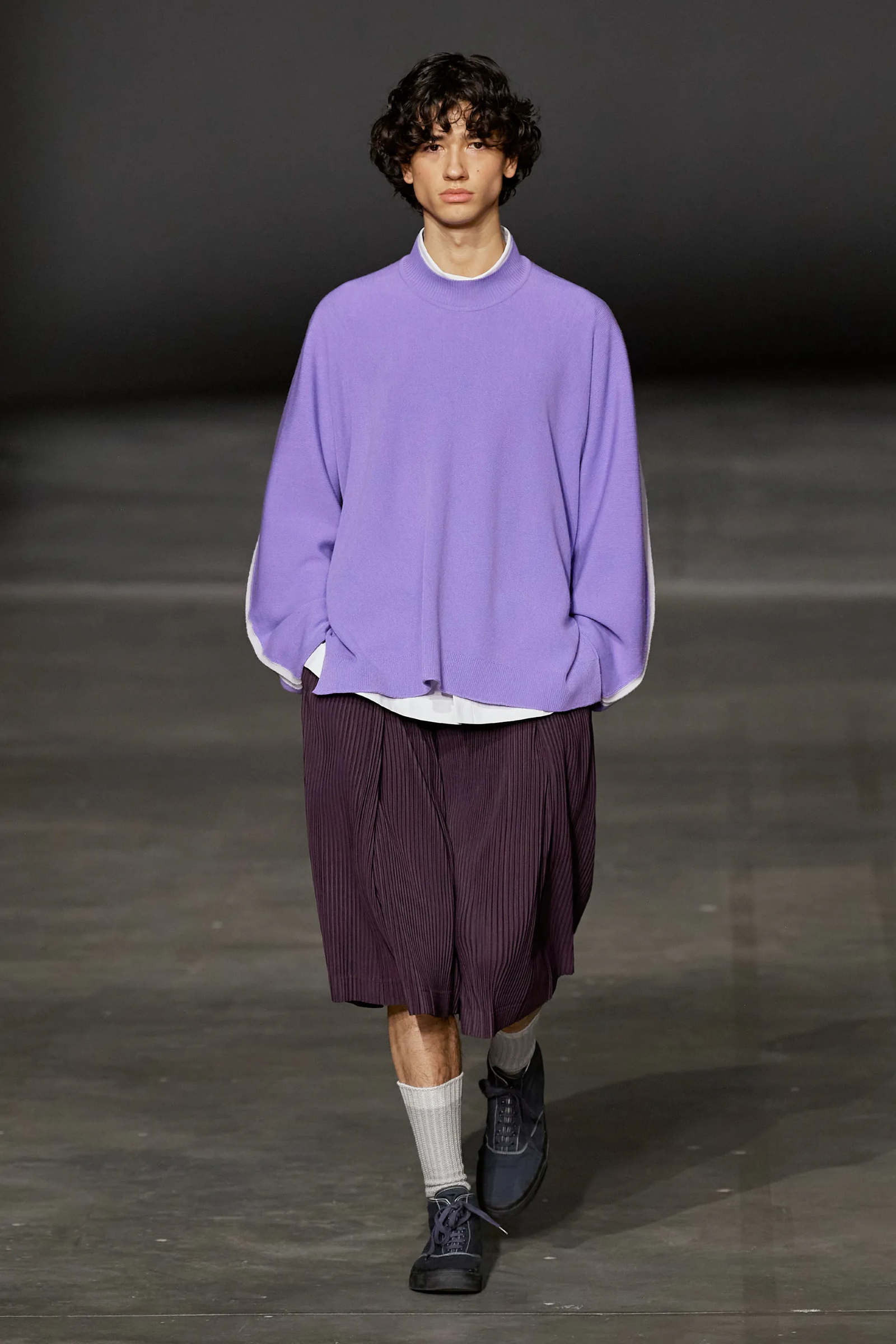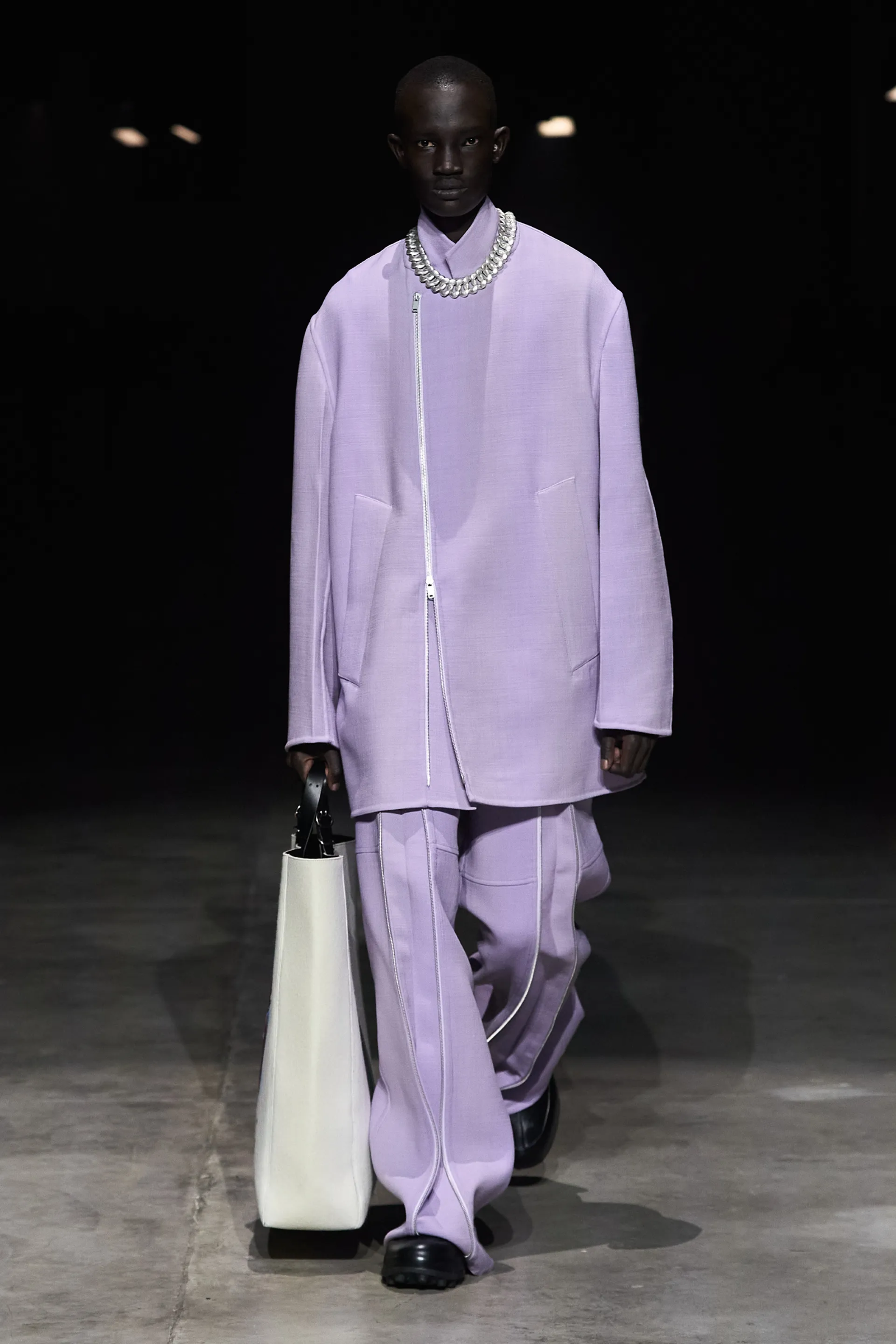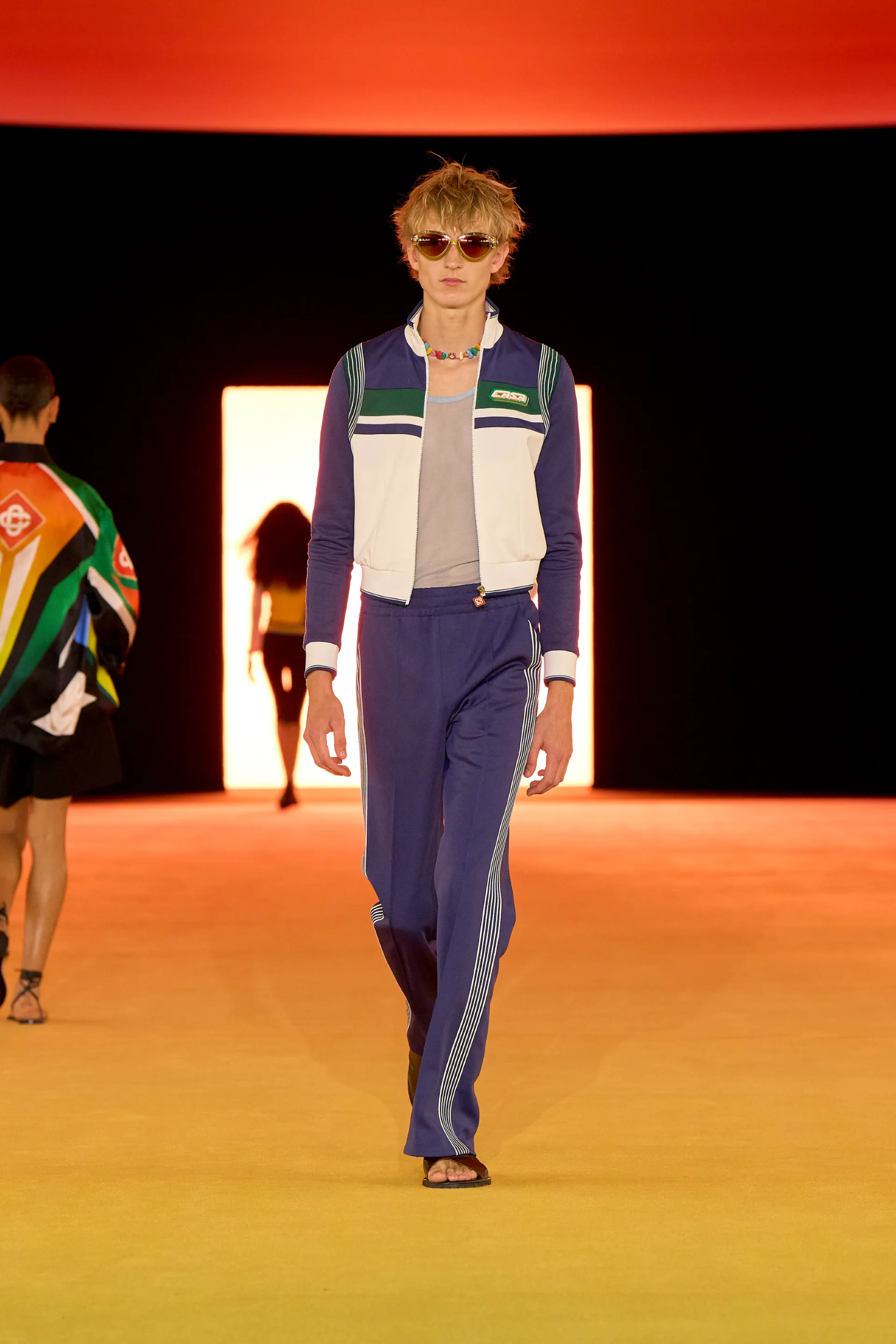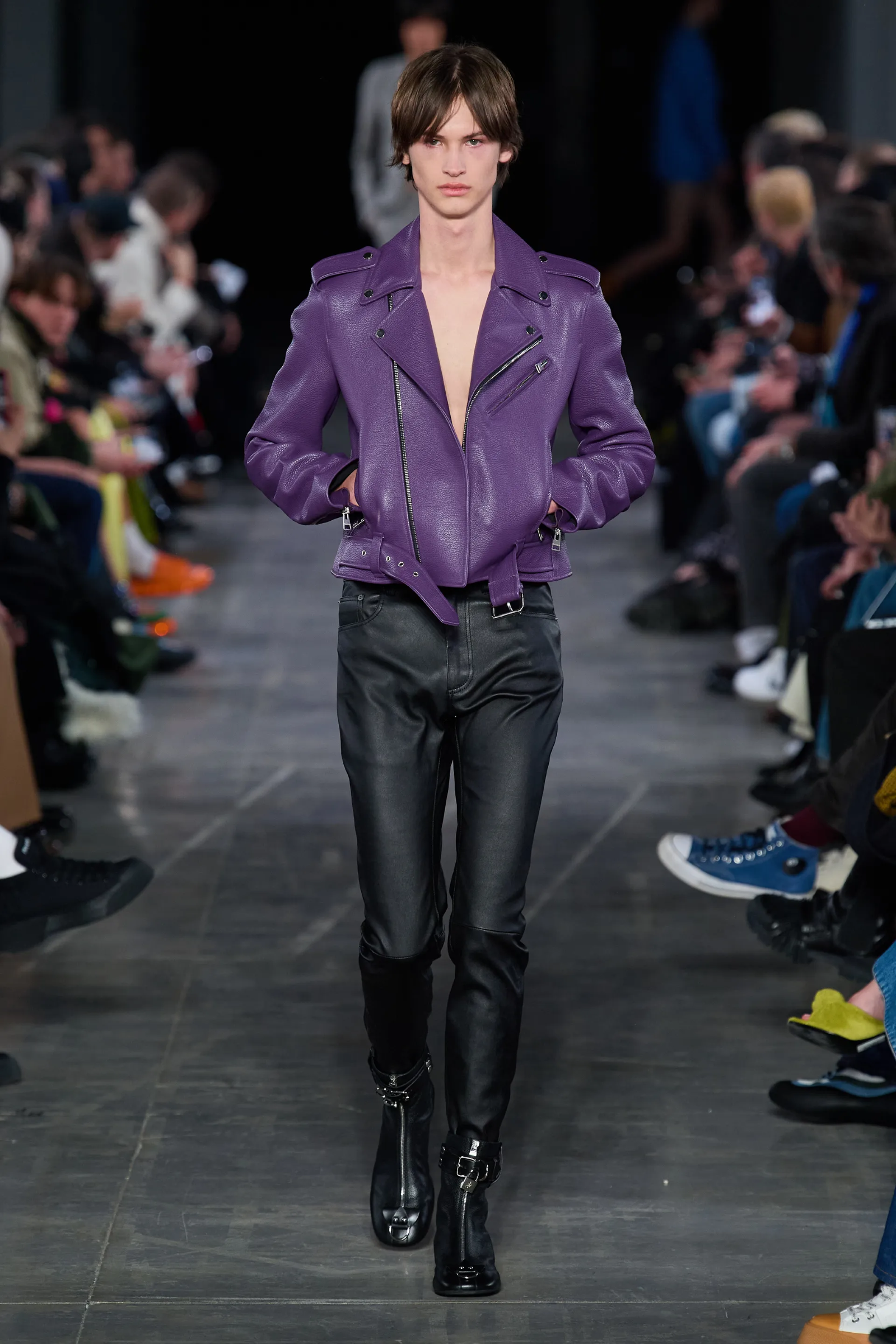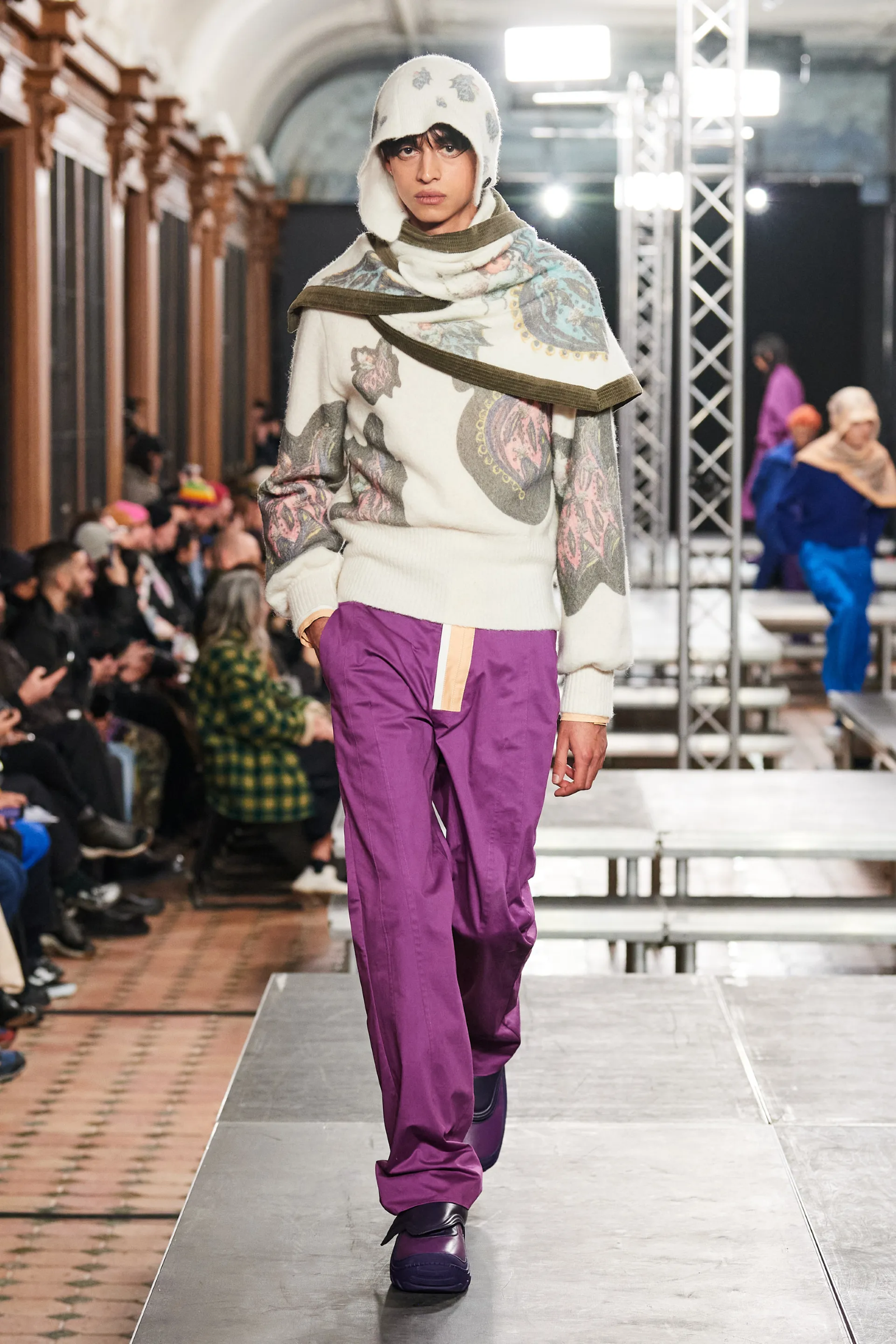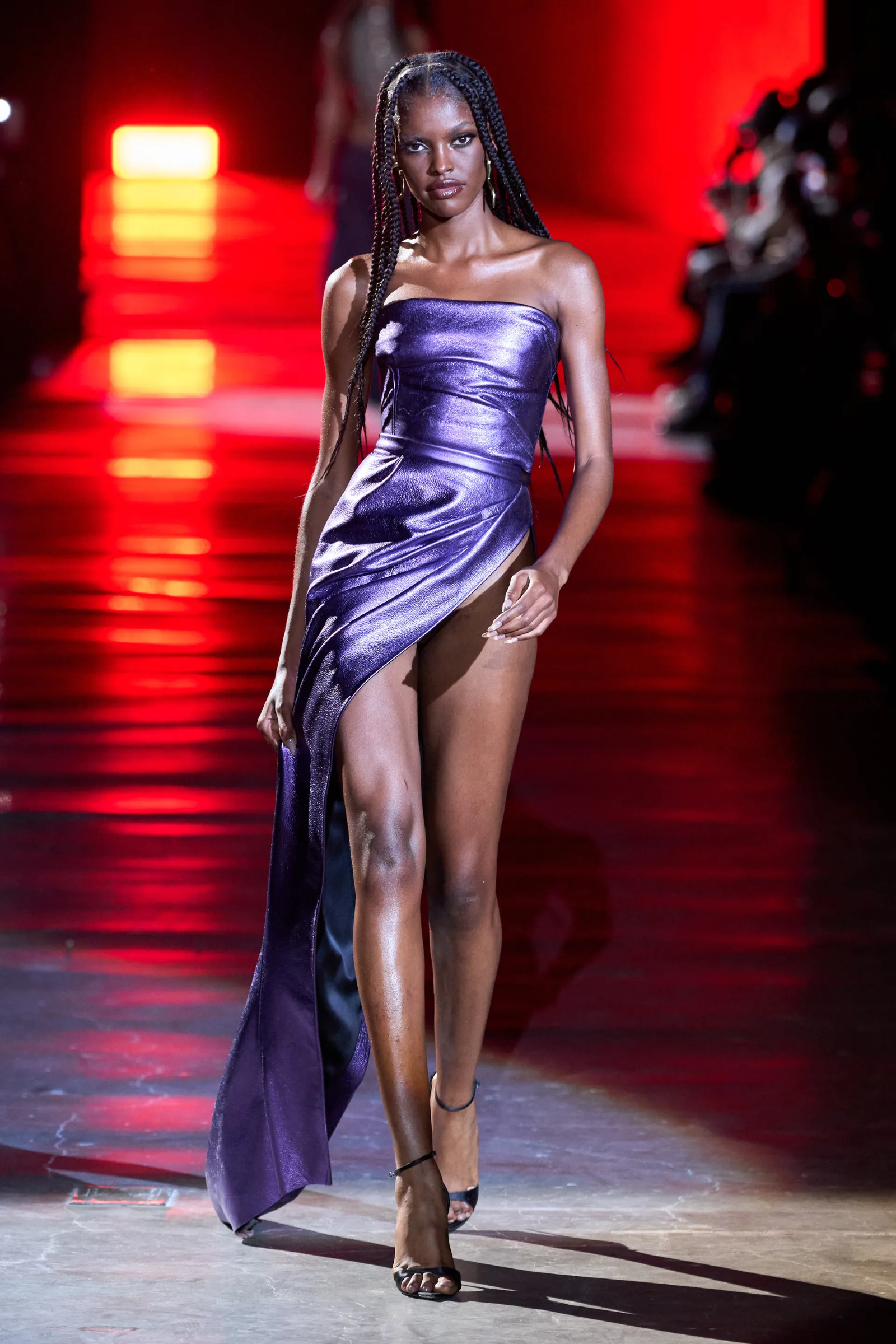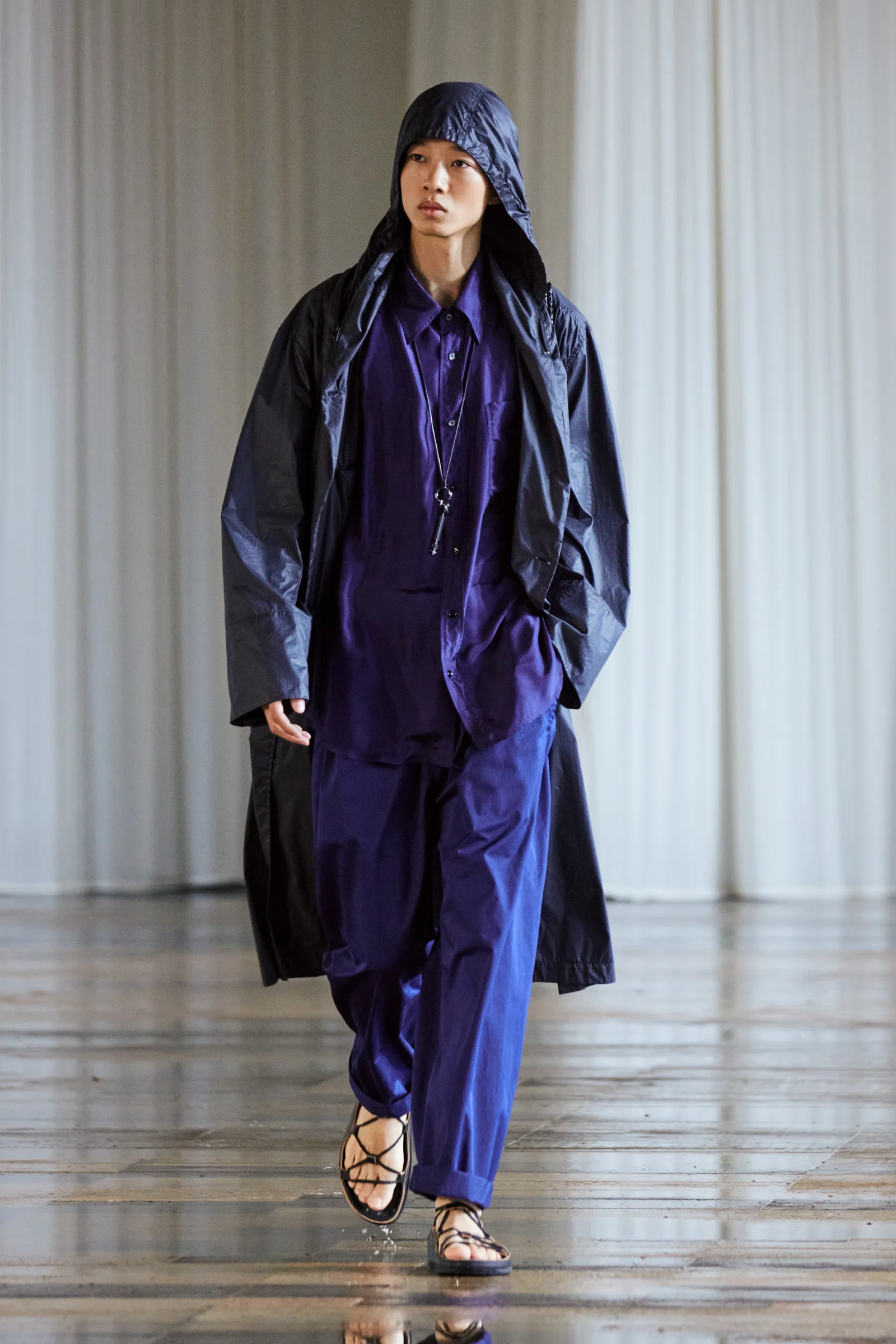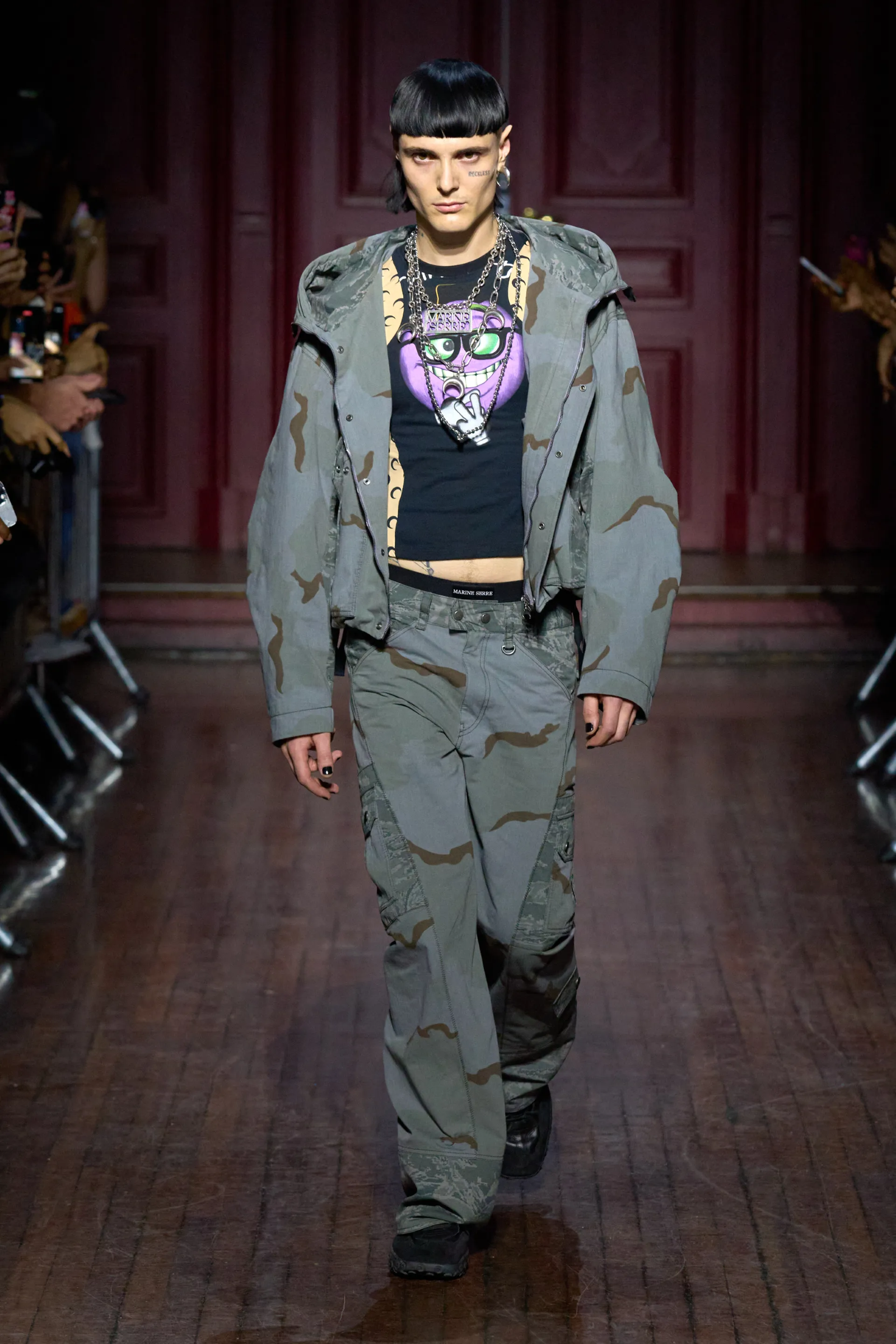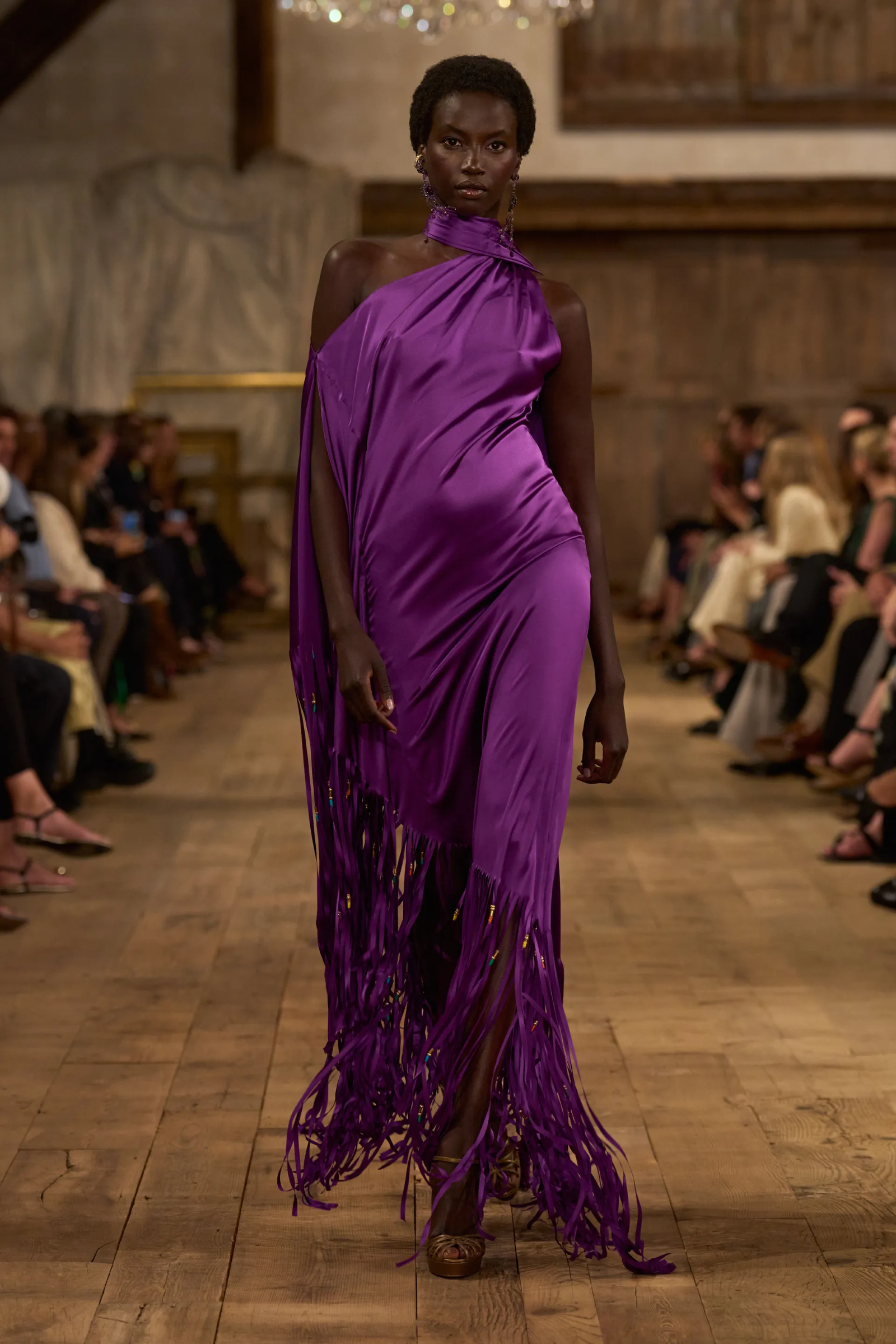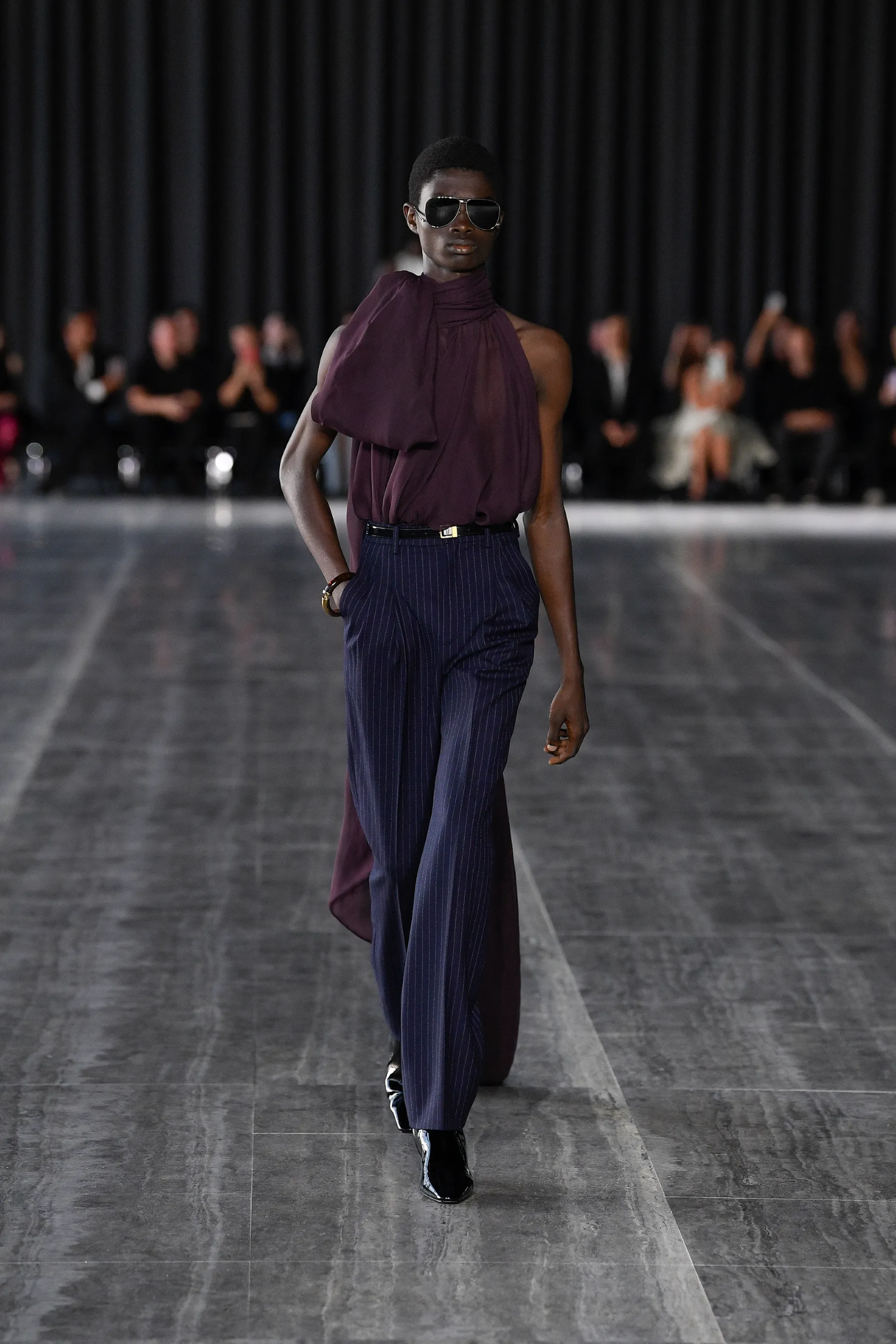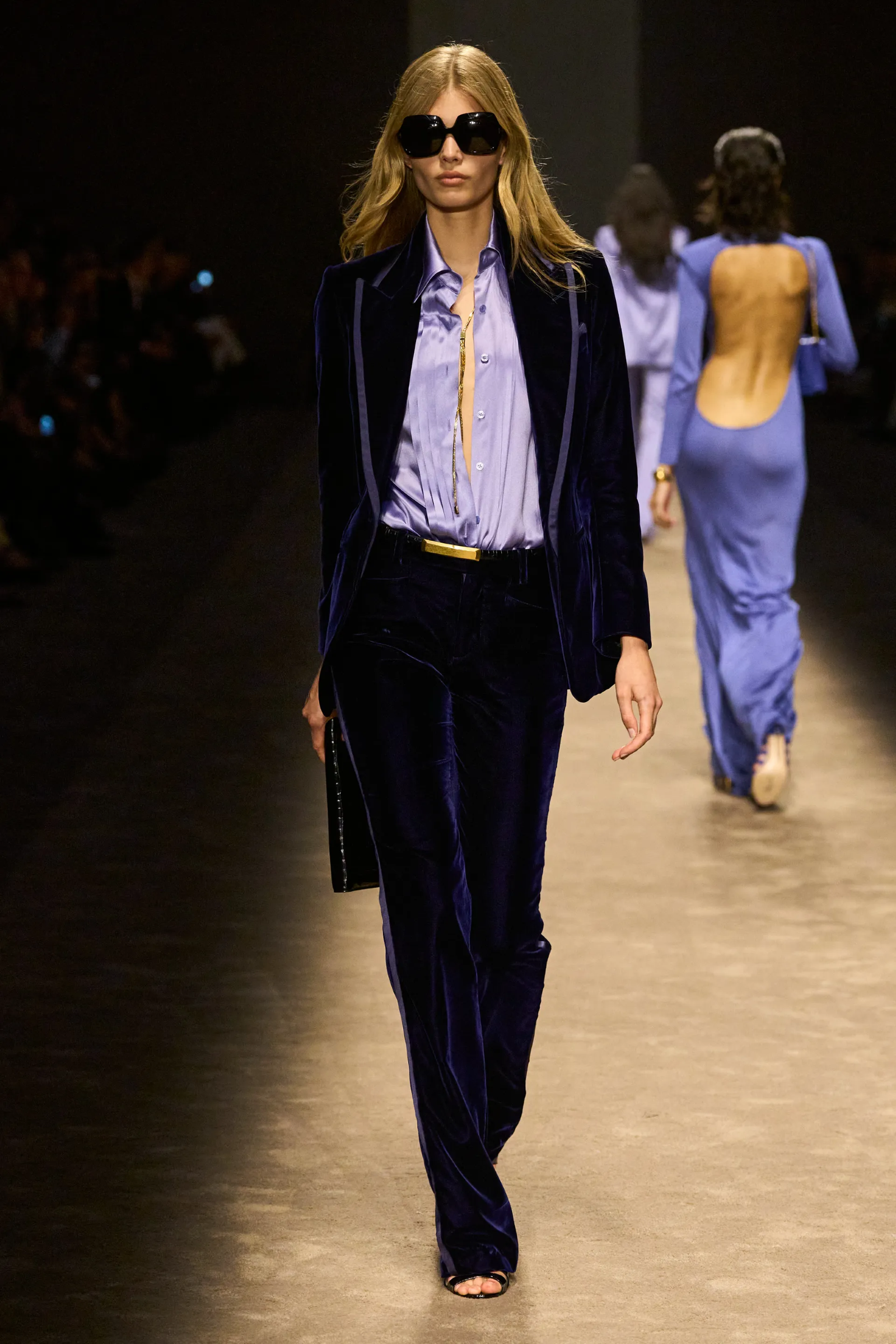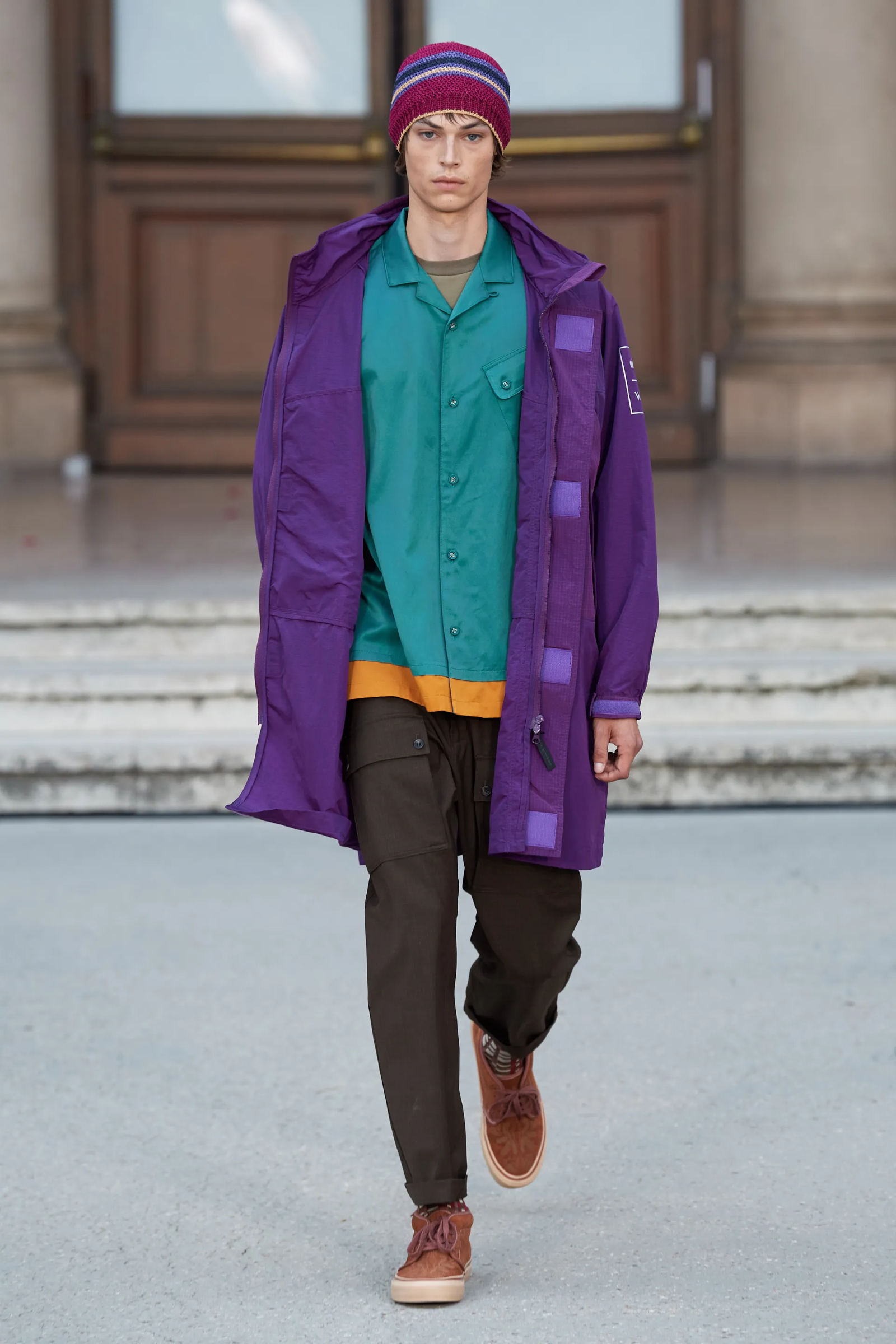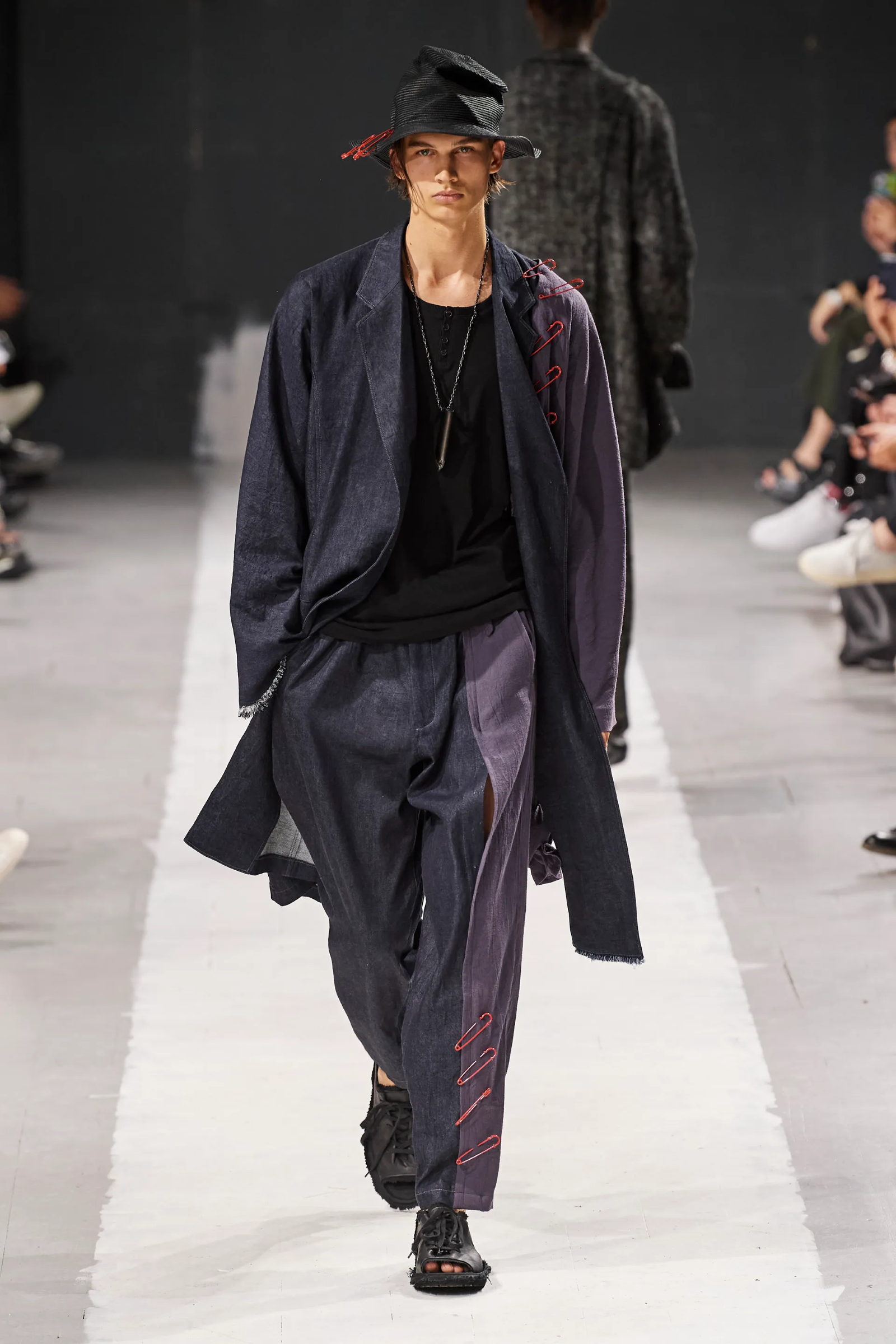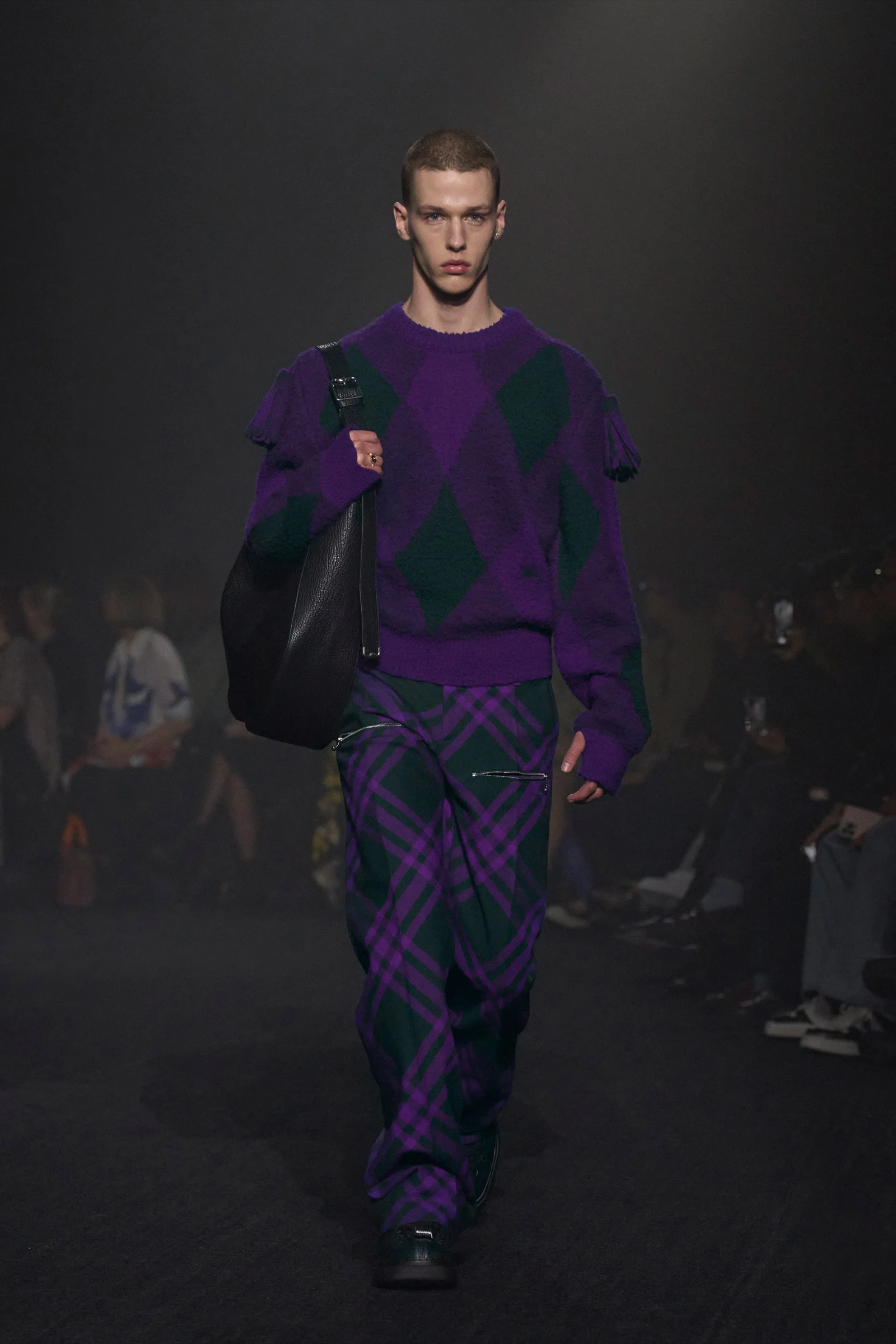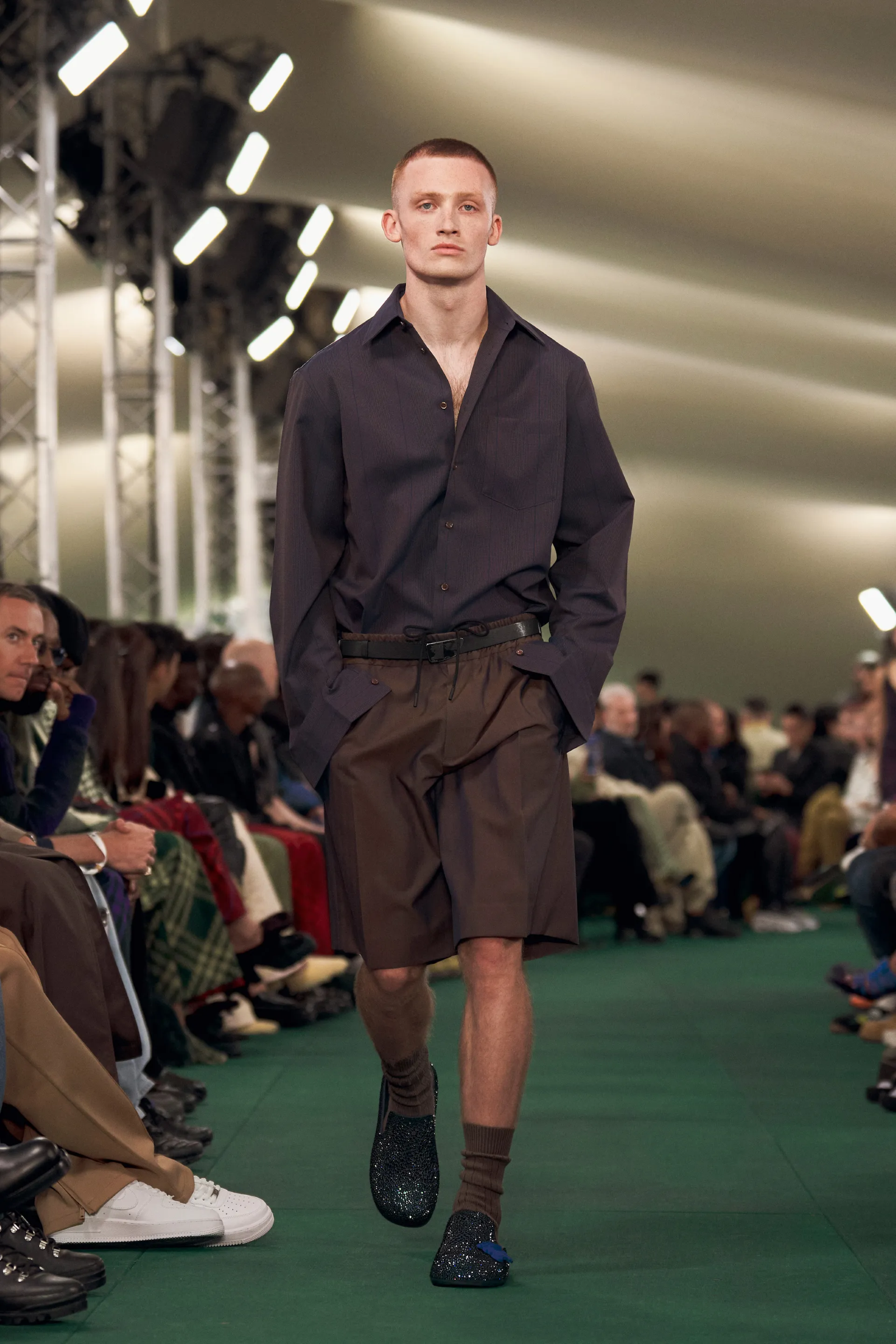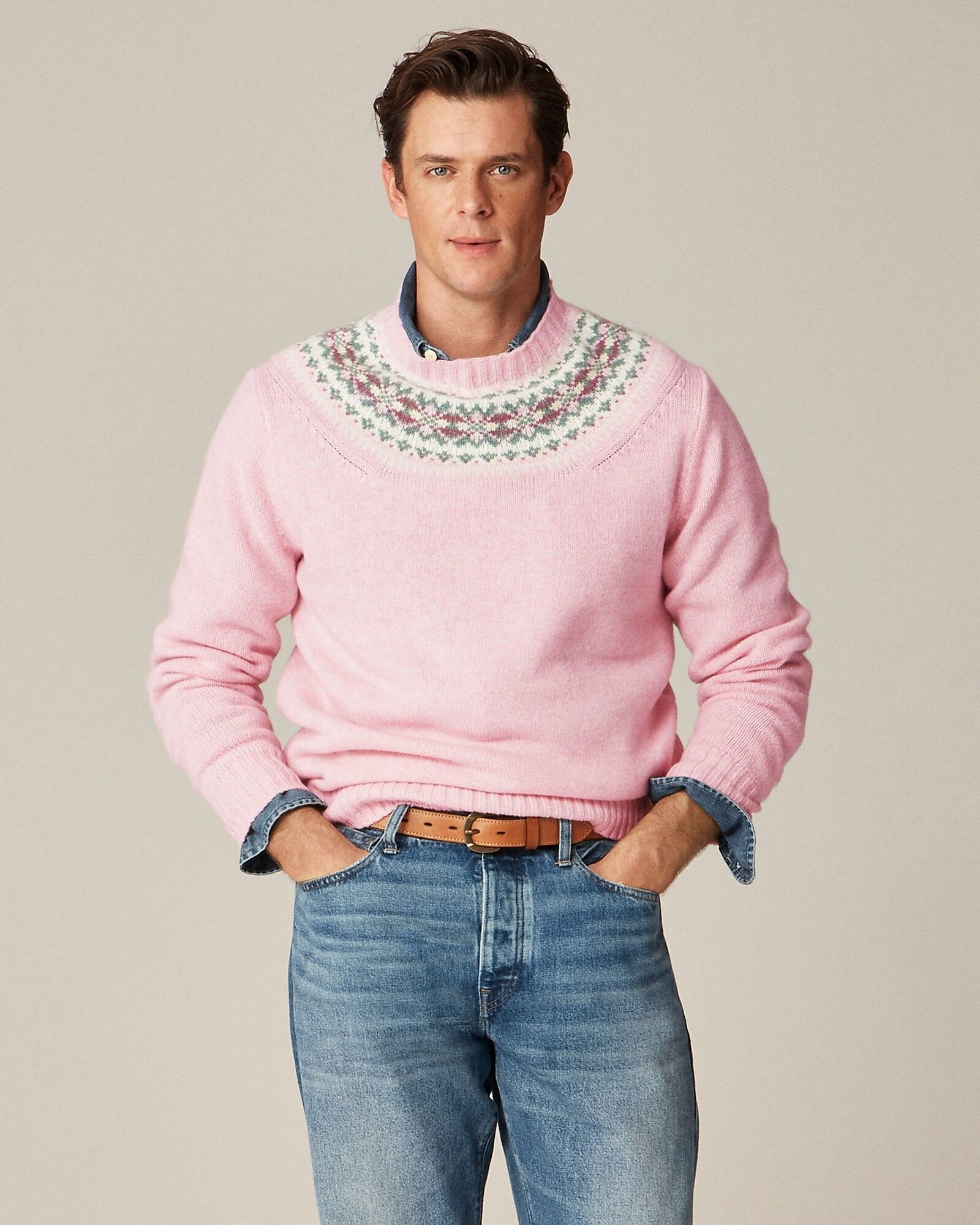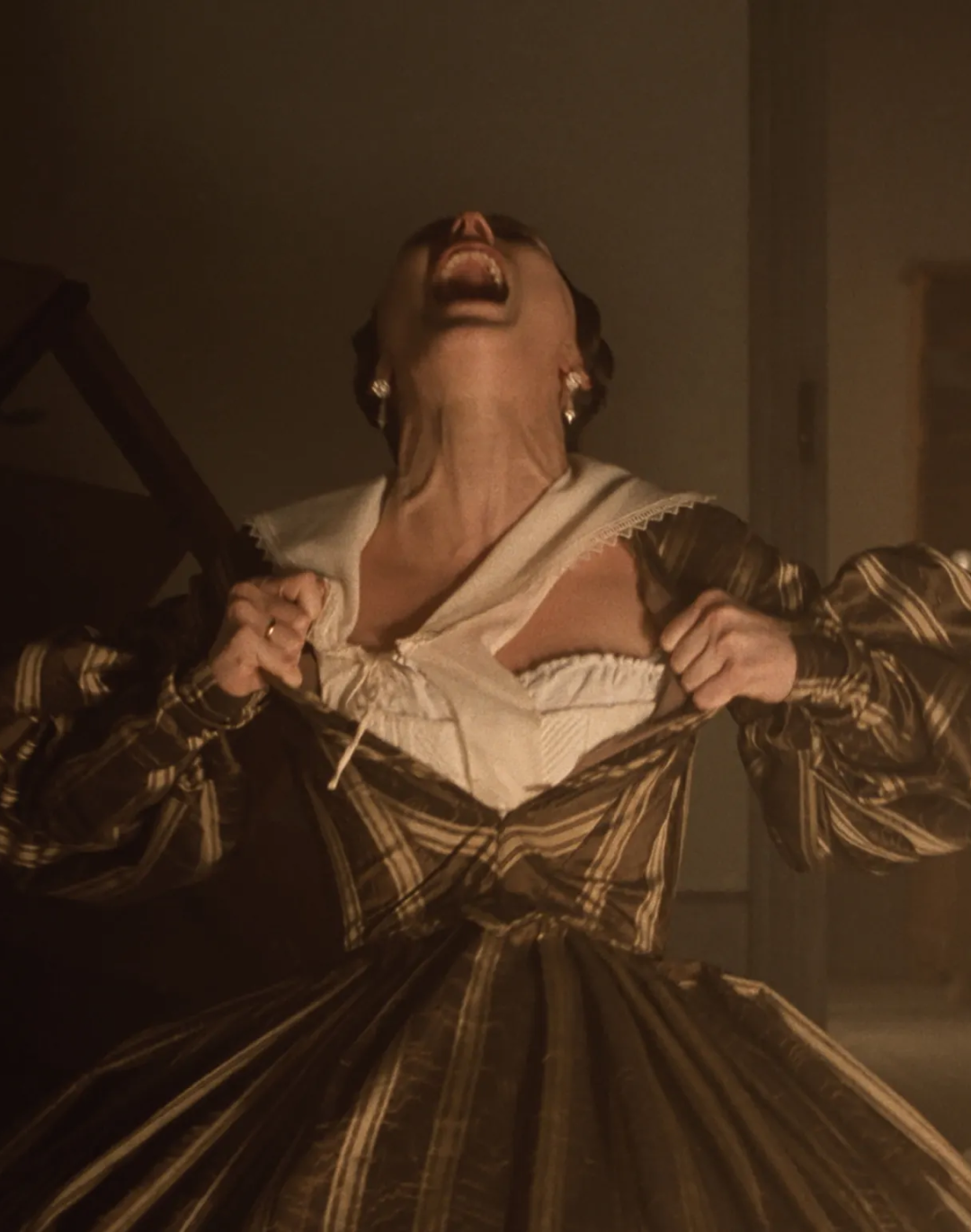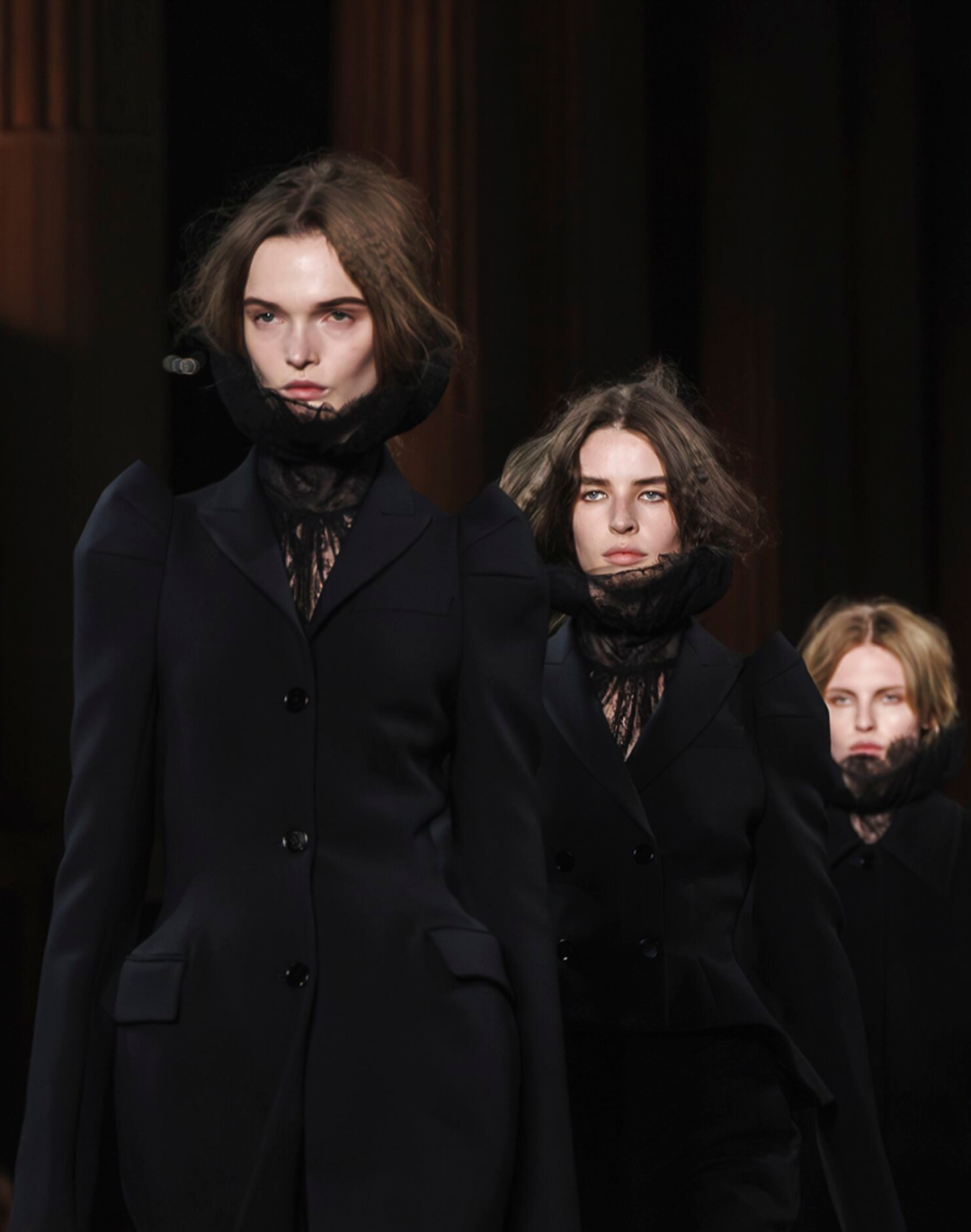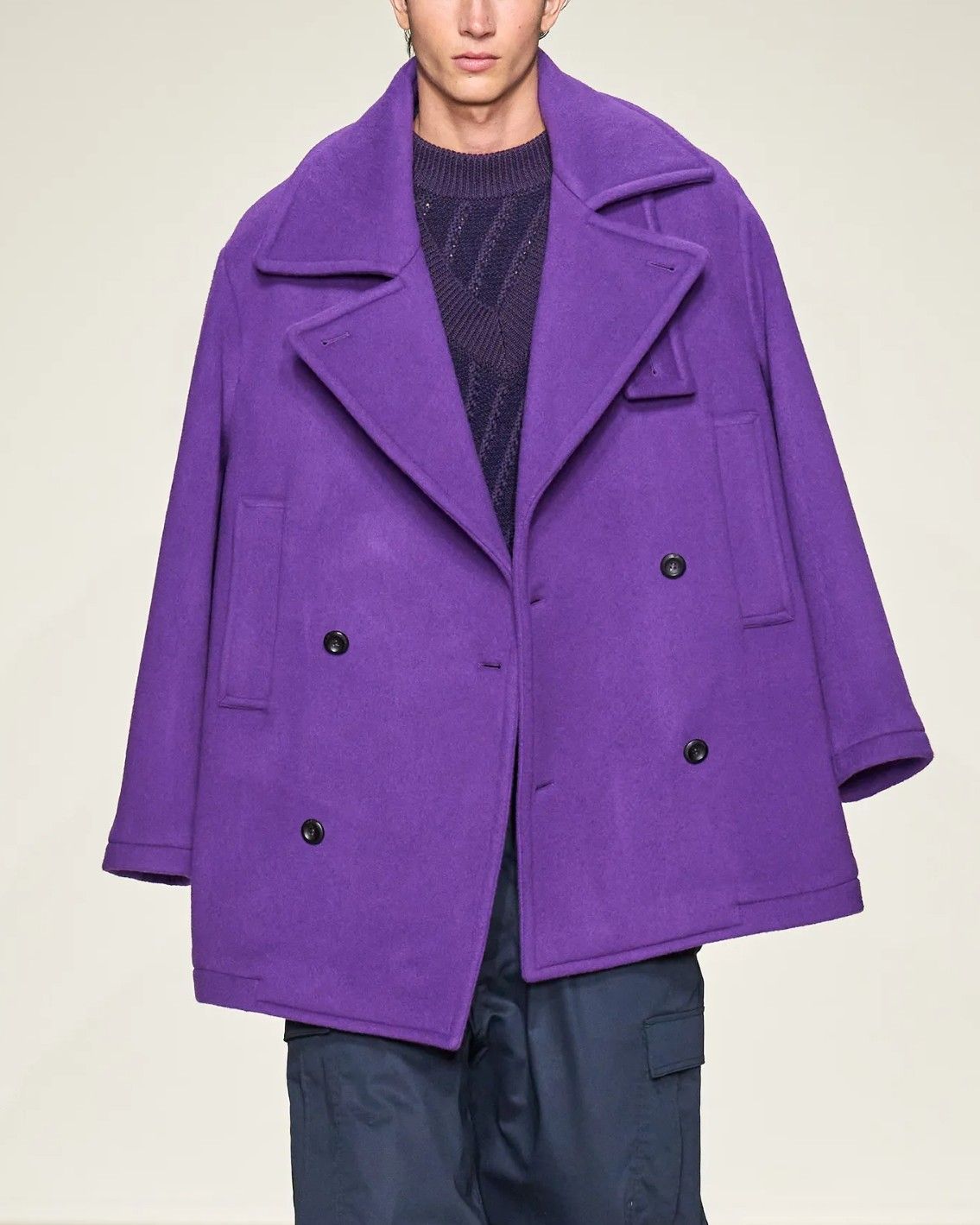
This autumn everyone needs a touch of purple Just a touch
On 21 March 1933, ninety years ago, Gabriele D'Annunzio wrote to his tailor in Milan sending him back some pink shirts and immediately listed all the colours he wore and which would remain, practically to this day and with the exception of black and green, the main colours used in mainstream male fashion: «the grey, the ivory white, the lion-coloured [which would be our caramel/camel brown, ed], the light blue». Even this year, and specifically this winter, the predominance of these colours remains marked - we are in the year of office chic after all, where greys and ties, stark blacks and blue jeans dominate. Not least, one trend that appeared in numerous shows saw a colour peeping through different looks: purple. The colour, although present in numerous collections through the years, had not become a full-bodied trend since 2007, the year after the Grammy's where Kanye West showed up in a lavender tuxedo to collect his award, and where, at least in Italy, the subcultures of truzzi and emo started to incorporate purple, pink, fuchsia and red details to their outfits. Purple came out of that year with broken bones, remaining flashy and somewhat cheap for a long time - until this year at least.
Before the colour experts show up in the newsroom with torches and pitchforks, let's make it clear that this year's catwalk showed many different shades of purple: from indigo to lavender, passing through aubergine, plum, amethyst and lilac or, for those who don't care about the pantone codes of the world, from the lightest and most impalpable purples to the darkest ones. But it was impossible not to notice how, around the FW23 and SS24 collections, purple details began to animate looks in neutral colours, each declined according to the brand. And so at Prada we saw a purple jacket and bag; big coats in the same colour at Emporio Armani, Fendi, Givenchy, Rick Owens and Acne Studios; knitwear and jackets at Dior, Burberry, Dries Van Noten, Chanel and so on. In all these cases, purple has been declined in three ways: the first was to make it the outermost layer of a layering that includes grey or black lower layers; the second was to make purple a brightening detail in achromatic outfits; the third was to take lilac or lavender shades to cover entire outfits. This return of purple is, as mentioned earlier, a corollary of the broader achromatic trend (precisely office greys, blacks and whites, pastels) which sees many outfits turn into neutral backgrounds and needs flashes of colour to liven them up, make them more dynamic or, trivially, create more interesting contrasts.
Now, numerous online articles trace the return to popularity of purple with its links to monarchical iconography, to its nature as the 'colour of royalty'. And although historically the association exists, we could not call it a real cause. The issue perhaps lies in the versatility of purple. As we know, fashion feeds on novelty, which also applies to colours, as happened, in Daniel Lee's time, with Bottega Green. Now, with the prevailing trend of quiet luxury, both designs and tonal palettes have become more minimal and so there is an urgent need to find novelty in the normality evoked by collections. And purple is not only a colour little used enough to seem like a novelty when it appears, but it is also capable of adapting to almost any shade of skin depending on the hue and can become the colour-statement of an accessory or, say, a jacket or coat capable of distinguishing an interesting achromatic outfit from a completely anonymous one. «Black is not as good as purple» Ralph Lauren once said, pointing out how indeed the vaguely eccentric colour was able to add panache even to the universal total black uniform of fashion insiders. And another time, in 2012, the great Alber Elbaz linked the controlled eccentricity of purple to luxury spending in times of economic crisis (very similar to these in their general contours) by telling the WSJ:
«What do you wear in a bad economy? This is a very, very sensitive issue. On one hand, you say that when things are going sour — when everything is not as easy and fun as it used to be — maybe there is some element that can bring fun and joy again […]. If I were a buyer today in one of the American department stores, I would go with extremes — the most beautiful, the more expensive, the more eccentric. I would take risks. The worst thing would be to buy only the little black dress. You know why? Because everyone has it already. I would go with a purple dress, something different».










































